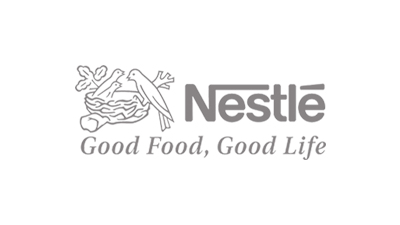Natural gas is a major source of energy. Liquefied natural gas or LNG is natural gas that has been converted to a liquid form for the ease of storage or transport by cooling natural gas to approximately ?162 ?C. Afterwards, it is stored at essentially atmospheric pressure. Liquefied natural gas takes up about one six hundredth the volume of natural gas in the gaseous state. It is odourless, colourless, non-toxic and non-corrosive. LNG, or liquefied natural gas, is natural gas that is cooled to -260? Fahrenheit until it becomes a liquid and then stored at essentially atmospheric pressure. Converting natural gas to LNG, a process that reduces its volume by about 600 times ? similar to reducing the volume of a beach ball to the volume of a ping-pong ball ? allows it to be transported internationally via cargo ships. A LNG filling station is a facility which sells LNG to vehicles. Liquefied natural gas filling stations rely on bulk delivery of fuel via tanker trucks similar to the way in which gasoline and diesel are delivered to filling stations. As LNG needs to be stored at -160 Celsius in order to stay in a liquid state, the fuel is delivered to the station site and stored in a special insulated cryogenic tank. The fuel is pumped from the storage tank and dispensed in a way that is similar to liquid fuels. As LNG dispensers operate at cryogenic temperatures, training is needed in order to dispense the fuel safely. Protective gloves and face shields must also be worn by personnel. LNG Filling Stations consist of LNG tank, pump skid and submersible pump, booster truck carburetor, carburetor, EAG heater (the three carburetor will change with different processing,), plus liquid machine etc. The Blue Corridors project?s aim is to establish LNG as a real alternative for medium & long distance transport - first as a complementary fuel and later as an adequate substitute for diesel. Up to now the common use of gas as fuel was for heavy vehicles running on Natural Gas (NG) only for municipal use, urban buses and garbage collection trucks. In both types of application engine performance and autonomy are good with present technologies, being well adapted to this alternative and cleaner fuel. Since the COVID-19 virus outbreak in December 2019, the disease has spread to almost 100 countries around the globe with the World Health Organization declaring it a public health emergency. The global impacts of the coronavirus disease 2019 (COVID-19) are already starting to be felt, and will significantly affect the LNG Filling Stations 4900 market in 2020. COVID-19 can affect the global economy in three main ways: by directly affecting production and demand, by creating supply chain and market disruption, and by its financial impact on firms and financial markets. The outbreak of COVID-19 has brought effects on many aspects, like flight cancellations; travel bans and quarantines; restaurants closed; all indoor events restricted; over forty countries state of emergency declared; massive slowing of the supply chain; stock market volatility; falling business confidence, growing panic among the population, and uncertainty about future. This report also analyses the impact of Coronavirus COVID-19 on the LNG Filling Stations 4900 industry. Based on our recent survey, we have several different scenarios about the LNG Filling Stations 4900 YoY growth rate for 2020. The probable scenario is expected to grow by a xx% in 2020 and the revenue will be xx in 2020 from US$ xx million in 2019. The market size of LNG Filling Stations 4900 will reach xx in 2026, with a CAGR of xx% from 2020 to 2026. With industry-standard accuracy in analysis and high data integrity, the report makes a brilliant attempt to unveil key opportunities available in the global LNG Filling Stations market to help players in achieving a strong market position. Buyers of the report can access verified and reliable market forecasts, including those for the overall size of the global LNG Filling Stations market in terms of both revenue and volume. Players, stakeholders, and other participants in the global LNG Filling Stations market will be able to gain the upper hand as they use the report as a powerful resource. For this version of the report, the segmental analysis focuses on sales (volume), revenue and forecast by each application segment in terms of sales and revenue and forecast by each type segment in terms of revenue for the period 2015-2026. Production and Pricing Analyses Readers are provided with deeper production analysis, import and export analysis, and pricing analysis for the global LNG Filling Stations market. As part of production analysis, the report offers accurate statistics and figures for production capacity, production volume by region, and global production and production by each type segment for the period 2015-2026. In the pricing analysis section of the report, readers are provided with validated statistics and figures for price by manufacturer and price by region for the period 2015-2020 and price by each type segment for the period 2015-2026. The import and export analysis for the global LNG Filling Stations market has been provided based on region. Regional and Country-level Analysis The report offers an exhaustive geographical analysis of the global LNG Filling Stations market, covering important regions, viz, North America, Europe, China and Japan. It also covers key countries (regions), viz, U.S., Canada, Germany, France, U.K., Italy, Russia, China, Japan, South Korea, India, Australia, Taiwan, Indonesia, Thailand, Malaysia, Philippines, Vietnam, Mexico, Brazil, Turkey, Saudi Arabia, UAE, etc. The report includes country-wise and region-wise market size for the period 2015-2026. It also includes market size and forecast by each application segment in terms of volume for the period 2015-2026. Competition Analysis In the competitive analysis section of the report, leading as well as prominent players of the global LNG Filling Stations market are broadly studied on the basis of key factors. The report offers comprehensive analysis and accurate statistics on sales by the player for the period 2015-2020. It also offers detailed analysis supported by reliable statistics on price and revenue (global level) by player for the period 2015-2020. On the whole, the report proves to be an effective tool that players can use to gain a competitive edge over their competitors and ensure lasting success in the global LNG Filling Stations market. All of the findings, data, and information provided in the report are validated and revalidated with the help of trustworthy sources. The analysts who have authored the report took a unique and industry-best research and analysis approach for an in-depth study of the global LNG Filling Stations market. The following manufacturers are covered in this report: Kunlun Energy CNOOC ENN Energy Holding Guanghui Sinopec Cryostar Engie FortisBC LNG Filling Stations Breakdown Data by Type Mobile Station Permanent Station LNG Filling Stations Breakdown Data by Application Vehicle Ship
1 Study Coverage 1.1 LNG Filling Stations Product Introduction 1.2 Key Market Segments in This Study 1.3 Key Manufacturers Covered: Ranking of Global Top LNG Filling Stations Manufacturers by Revenue in 2019 1.4 Market by Type 1.4.1 Global LNG Filling Stations Market Size Growth Rate by Type 1.4.2 Mobile Station 1.4.3 Permanent Station 1.5 Market









